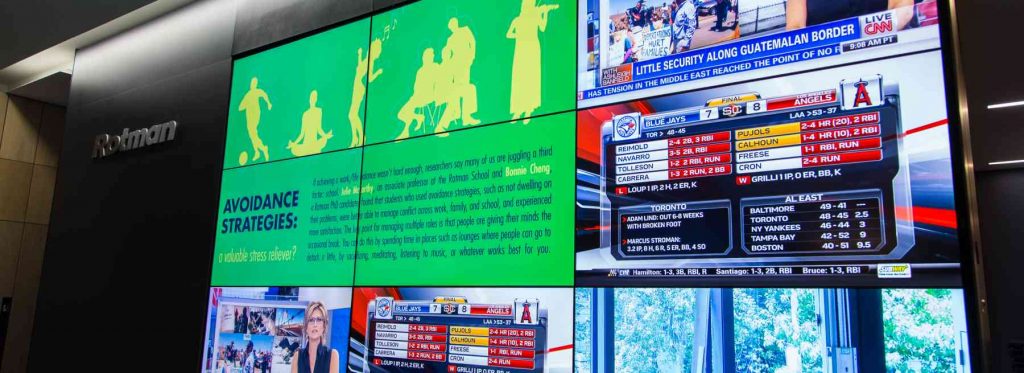The Evolution Of Data And Digital Signage
Doug Bannister
January 7, 2015
Since the mid 1990s organizations have been leveraging their data to drive value by making it visible to their employees and customers on devices like digital signs. The way this data has been viewed has dramatically changed over the last 20 years. In the mid 1990s data was primarily displayed as text on LED boards with no graphics. One of the best examples of this is the LED board on a stock trading floor. The information typically came from two sources, a text entry system and a news feed, and has some basic rules to drive the colour of the data. By 2003 LCD screens were popular and the visuals had some graphics with the data, but the sources for data were still limited. Fast forward to 2010 the sources of information have increased significantly and the graphics have improved.
Today organizations have a multitude of display technology available to them and are using it to transform their data into dynamic visual communications and experiences. They are leveraging real-time information to empower employees and enhance customer experience. From Key Performance Indicators (KPIs) to production statuses to schedule changes to daily specials, digital signage is enabling businesses to deliver real-time targeted information across their entire organization.
Take for example an electronics store where there are an assortment of tablets on display. When a potential customer picks up a tablet to look at it that action sets off a series of different actions – for the customer they receive customized information on the screen in front of them about the features of the tablet, for the store clerk they are notified on their tablet of the inventory levels/pricing of the models the customer is interested in and for the head office they are updated in real-time on screens in their office of inventory levels and product sales.
Often the data we need to see already exists but it isn’t easily accessible or is what some call “dark data”. Imagine the business benefits and productivity improvements that can be derived from turning the light on this data. For one hospital in California the information on operating room status was contained in a scheduling system and that information was available at the nurses station. Caretakers, doctors and orderlies were constantly coming by the nurses station asking for updates on the status of operating room. By taking this room status information and making it available on digital screens in the hallways by the operating rooms the hospital was able to gain significant productivity improvements for all the employees in the area.

CHIEF EXECUTIVE OFFICER & CHIEF TECHNOLOGY OFFICER
Doug is Chief Executive Officer and Chief Technology Officer of Omnivex Corporation.
Doug is considered by many as a visionary in the digital signage space. In his role as CEO and CTO Doug is responsible for the long term product architecture and the overall vision for the company. He has always maintained direct responsibility for the architecture of the software to ensure the product remains at the forefront of the industry. Combined with his vision, leadership and experience as an entrepreneur in the LED sign market, Doug has used his understanding of customer requirements and knowledge of technology to create one of the leading software solutions for the digital signage industry.

